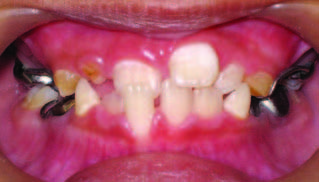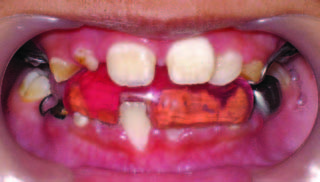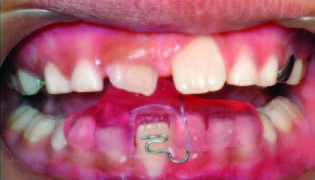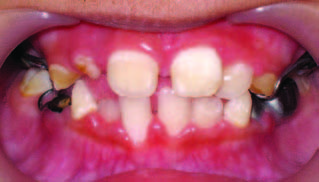THE EDITOR'S CORNER
The most important contribution of direct bonding of brackets and attachments is not esthetics and it is not speed. The aspects of direct bonding that are of primary concern to orthodontists are those that can improve treatment procedures and treatment mechanics. This may be a good time to review these considerations in light of our experience with direct bonding so far, before we get so hung up on esthetics and speed that we wind up losing the whole advantageous procedure because of misdirection of our goals and misarrangement of our priorities. It is not that esthetics and speed are unimportant, nor that they may not well become a standard part of the bonding procedure. It is just that they are not the prime reason that orthodontists should be interested in direct bonding.
The most important potential of direct bonding is the elimination of banding. Elimination of banding means elimination of separation, band fitting, band thickness, and band cementing. Eliminating separation and band fitting spares the orthodontist the time and the patient the discomfort and inconvenience of those procedures. Elimination of the band material itself is best dramatized by taking a pile of twenty-four band strips and seeing how thick they are. If you are banding first molar to first molar in a nonextraction case, you have twenty-four band thicknesses interproximally. If you use .004" molar band material and .003" band material on the rest of the teeth, which would be minimal, you have a total thickness of .079". If that doesn't seem like very much, convert it to millimeters on the basis that one millimeter equals .039". You are adding two millimeters interproximally.
Adding two millimeters to arch length introduces an inexactness to orthodontic procedure which may be tolerable at times, but mocks the analyses made in tenths of millimeters. It may be critical in cases with certain attributes such as crowding, protrusion, high level of incisal tips of lower incisors, closed bite, severe rotation, high FMA, and borderline arch length discrepancies of 3-4mm.
In borderline nonextraction cases and in maximum anchorage extraction cases, the effect of adding 2mm to arch length mostly in an anterior direction can be important. Also, the tendency for expansion in such cases is critical and may affect the stability of the finished result.
The presence of visible band spaces following band removal is normal, but it is a technical inexactness that can negate a percentage of whatever fine finishing details were performed. Many times, this space seems to be almost nonexistent. At other times, it seems significant. No matter how these spaces are closed--whether we let them close naturally if they will, whether we introduce an elastic or an elastic ligature from molar to molar, whether we use a retainer or positioner appliance to close the space--there is limited control of band space closure as far as axial inclinations are concerned. Of all the methods we use, the positioner appliance has to be the most controlled.
Eliminating banding would also eliminate band cementing. Despite the fact that band cements and cementing procedures have been improved, indications are that, all other things being equal, bonding should prove superior to banding as far as decalcification potential is concerned. However, the big potential for bonding is for lining teeth up in finished positions, with retainers acting as true retainers and not as finishing appliances except to a most limited extent.
In that sense, at this time we should not fail to consider the use of metal brackets, because of their strength, nor adherence to the most stringent care in bonding procedures to maximize successful bonding. Nothing is going to kill direct bonding faster than too many failures due to broken brackets or unsuccessful bonds. If bonding is going to survive, orthodontists must enjoy a success rate equal to what they have experienced with cemented bands. Trying for speed and for bonding too many brackets at one time may cause a discouraging failure rate.
On page 637 of this issue, Dr. Jacob Weisser describes his bonding technique. He uses modified stainless steel brackets and goes so far as to bond them one at a time. I'll wager that his success rate is high and that he is enjoying the benefits that bonded brackets and attachments can contribute to orthodontic treatment mechanics. Polycarbonate and plastic brackets bond well and good bonding procedure should result in a low failure rate due to the bond. They are not as strong as metal brackets and may not yet be as reliable over a two-year period as metal brackets.
So, keeping factors such as esthetics and speed and possibly economy in mind, we should not overlook the slower approach to direct bonding in terms of still considering the use of metal brackets and limitation of the number of brackets bonded at one time.






